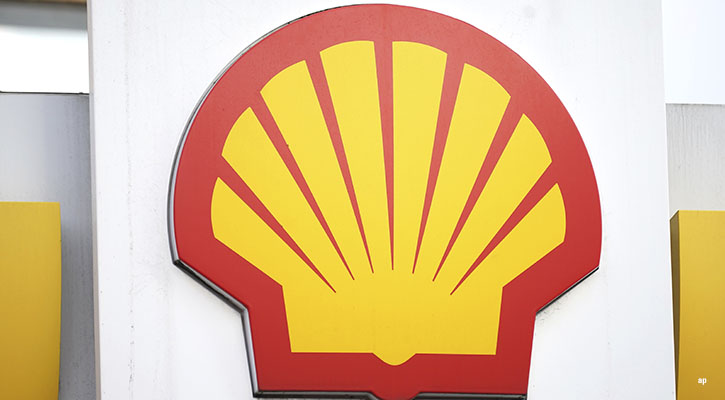In this article we look at two of the biggest and best known corporate bond funds in the UK: Fidelity Moneybuilder Income, which carries Morningstar’s Elite rating, and M&G Corporate Bond, rated one notch lower at Superior. We explore the reasons behind the different ratings, and investigate both similarities and differences between these funds to help you decide which one fits your needs.
People--The Best and Brightest
Ian Spreadbury has managed the Fidelity Moneybuilder Income fund since its inception in 1995. He has personally built the fixed-income team, a point which we believe stands him in very good stead when it comes to getting the best out of the analysts. Prior to Fidelity he spent a decade running bond portfolios at L&G and also has actuarial and underwriting experience. We think this background is highly relevant when managing large bond portfolios, and gives him a good perspective on risk management.
Richard Woolnough has a shorter track record at M&G Corporate Bond fund, having taken over the reins in 2004, but is no less experienced. Woolnough was at Old Mutual from 1995 to 2004 where he built a strong track record at Old Mutual Corporate Bond, but his career extends back to 1985. Like Spreadbury, he has long been a manager of bond funds and has experienced the same variety of differing market conditions throughout his career.
Both managers are backed by large analyst teams. M&G has the larger of the two, with approximately 70 analysts compared with Fidelity’s 40. High numbers don’t automatically mean a better team, but over the years we have met with different individuals in each to better understand their dynamics. Crucially, communication between analysts, portfolio managers and other investment staff seems to be healthy and constructive at both groups, and turnover amongst staff has been relatively low, giving both a distinct advantage over many of their peers.
There’s little in it when deciding between the two—they’re head and shoulders above most of the competition, in our view, and this is a key reason we have as much confidence as we do in both funds.
Parent--Changes Ahead?
M&G was acquired by Prudential in 1999 bolstering funds under management and the group's global influence, as well as giving them financial strength. Recent speculation has hinted at the possibility of Prudential selling M&G to raise capital. This possibility does raise some concerns, but even if it plays out, we think M&G is a respectable funds management house in its own right. They have a strong culture among fund managers of doing the right thing for investors. We’re pleased that at least a portion of fund managers' bonuses are paid based on performance over three years and managers tend to invest in their own funds—an important alignment of interests with their investors. We are concerned that fund manager ownership stakes in the parent company could create conflicts of interest between the firm and the interests of fund investors—but our concerns are allayed by the firm’s broader behaviour. It tends to avoid launching trendy funds, manager turnover is low and managers typically focus on long-term returns.
Fidelity has also seen some instability recently with the departure of Nicky Richards, CIO of European Equities. While this development is disappointing, she put in place a number of improvements that have benefited the group and should continue to do so, unless her successor decides otherwise. The group is known for its tendency to spend liberally in an effort to be the best, reflected in its large teams of analysts. Like M&G, it includes a three-year performance element in its fund manager remuneration scheme, but manager turnover here has been higher than at M&G. The Fidelity way is to promote analysts through the ranks to become fund managers; their plethora of funds, combined with the typical career path, can lead to regular changes at the helm of their funds. A manager change at one fund often triggers further changes as managers are shifted to fill the vacated role. The fixed income team stands apart from this a little and has seen more stability in named fund managers than on the equity side of the business.
Change is inevitable in the corporate environment and though stability is important, so is how firms prepare for and cope with potential changes. In this regard, M&G and Fidelity have a common strength in that their depth of talent and strong culture is helping the firms cope well. We think both groups are investor-focused and provide a healthy environment in which fund managers can perform for their investors.
Process--A Differentiator
Both funds allow moderate investments in high yield bonds and foreign currency issues (typically hedged to GBP). Both managers leverage the large analyst teams for bottom-up ideas and select these in the broader context of macro views, which they formulate themselves. The big difference between them comes at the implementation level.
In the M&G fund, Woolnough often makes large adjustments to duration (essentially trying to predict the direction of interest rate movements) to reflect his prevailing economic outlook. For example, from 2007 to 2009 he shifted duration by as much as 2.5 years, on his belief that interest rates would have to fall hard and fast as the credit crunch intensified. This proved to be spot-on.
At Fidelity, Ian Spreadbury tends to make much smaller duration shifts, with his fund deviating from the index by less than one year. Like Woolnough, he’s not afraid to make macro calls, but he prefers to implement them through credit selection--for example, he moved increasingly into defensive names as the bull market wore on in 2007. Spreadbury makes a point that we think is valid--although he has added some value over the years using duration, it’s difficult to consistently get it right--and in the tight margins of the fixed income world, a wrong call on duration can overwhelm performance even if credit selection is good.
So although both managers make macro calls, the M&G fund has greater potential for upside when Woolnough gets his macro views right, and downside if he gets it wrong, and Morningstar’s data bears this out.
Another factor here is assets under management. Both funds have been popular choices for investors and both have seen assets rise considerably over the managers’ tenures. But here M&G has the greater headwind, not least because of Woolnough’s success over a shorter tenure. Across its retail bond funds, M&G owns roughly 15% of the sterling investment grade corporate bond market. Fidelity is also large although not on the same scale as M&G.
We think both funds have managed the headwinds of capacity well, with large teams helping to unearth a wide variety of ideas, and the managers adept at moving ahead of the cycle. Woolnough’s ability to make big duration shifts also helps. Capacity is a risk for both funds, but more so for M&G with their enormous scale.
Performance--Top Notch Returns
The track record at both funds is stellar, but a closer look is revealing.
The Fidelity fund is comfortably ahead of the category average over Spreadbury’s tenure and returns have been very consistent--top or second quartile in 12 calendar years out of his 14 year tenure. M&G’s track record is even better, albeit a shorter tenure--it’s been top quartile in its Morningstar Sterling Bond category every year of Woolnough’s stewardship except for 2009 where it was second quartile. Although Woolnough has beaten Spreadbury, the latters' record of consistent outperformance over such a long period increases our confidence in the Fidelity fund.
Volatility provides an added perspective. With M&G’s process allowing for larger duration bets, you might expect the fund’s volatility to be higher, but in fact the opposite is true. Woolnough’s well-timed top-down bets helped dampen volatility, such as the avoidance of financials in 2008. This serves as a reminder that historical volatility is not necessarily a good indicator of risk. In this instance, the Fidelity fund has tighter risk controls but has higher historical volatility over a five-year period.
Price--A Small Point of Difference, But Relevant
Morningstar has undertaken extensive research over the years into the predictors of fund performance--price has proven to be a reasonably reliable and unbiased indicator. Cheaper funds have, on average, tended to perform better than more expensive funds. Fidelity Moneybuilder Income is the cheaper fund here, with a TER of 0.99%. M&G Corporate Bond is slightly more expensive at 1.17%--not a huge difference but in the tight margins of fixed income every basis point counts and, given the scale of assets the firm runs in bond funds, we think some economies of scale could be passed on.
So Which Fund is Right For You?
We think M&G has the greater upside potential of the two funds, given Woolnough’s large duration bets and willingness to make top-down moves. The flipside is, we think the Fidelity fund is less risky (even though it’s been more volatile)--and risk is an important consideration for bond investors. Both managers have delivered strong returns over their tenures. We have a high opinion of both funds, as our ratings imply, but when it comes down to it the balance tips in favour of Fidelity, given its lower fee and smaller pot of assets.























